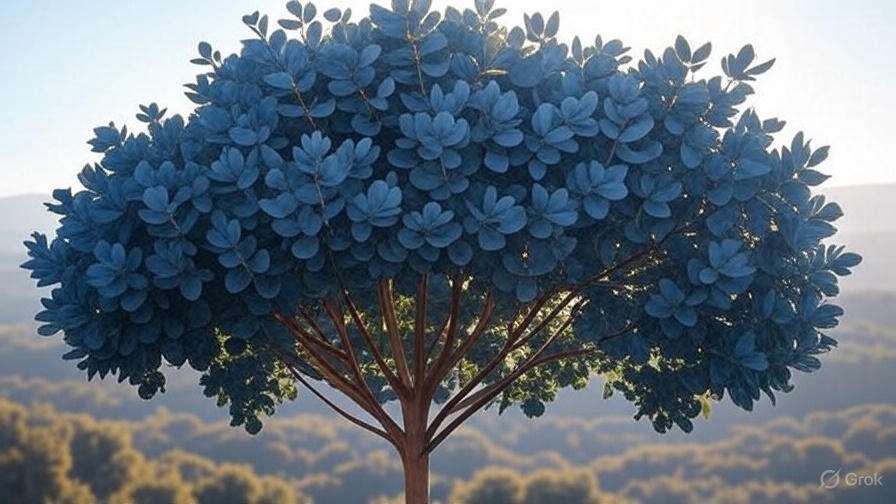
Everything You Need to Know About the Blue Eucalyptus Tree: Benefits, Care Tips, and Growing Guide
Are you fascinated by the stunning beauty of the blue eucalyptus tree but unsure how to care for it or where to start? 
In this guide, we’ll dive deep into everything you need to know about the blue eucalyptus tree—from its unique benefits to practical care tips that will ensure it thrives in your garden. Whether you’re a seasoned gardener or a beginner looking to add a touch of exotic beauty to your space, this article will equip you with the knowledge and confidence you need to succeed. Keep reading, and you’ll soon have all the tools to turn your blue eucalyptus tree into a healthy, stunning centerpiece.
Table of Contents
ToggleWhat is the Blue Eucalyptus Tree? 
The Blue Eucalyptus Tree (Eucalyptus globulus) is a striking evergreen tree native to Australia. Known for its smooth, silvery-blue leaves and tall, graceful stature, it adds beauty and a refreshing aroma to any landscape. Often called the “Blue Gum,” this tree is popular for its unique color, fast growth, and aromatic oils.
Key Characteristics of the Blue Eucalyptus Tree
- Appearance: The tree can grow up to 60 meters (about 200 feet) tall in its native habitat, though it is usually smaller when grown in gardens. Its blue-gray leaves have a glossy, waxy finish that gives them a distinctive color, hence the name “Blue” Eucalyptus.
- Aroma: Eucalyptus trees are famous for their fresh, menthol-like scent, which comes from the oils in the leaves. This natural fragrance has both calming and cleansing properties and is often used in essential oils and aromatherapy.
- Flowers: The tree produces large, white to pale yellow flowers, which are attractive to pollinators, especially bees. These flowers eventually give way to woody capsules filled with seeds.

Where Can You Grow a Blue Eucalyptus Tree?
While the Blue Eucalyptus tree thrives in Australia’s warm and dry climates, it can also be grown in temperate regions around the world. It prefers full sunlight and well-drained soil, making it perfect for gardens with a lot of space. If you live in a cooler area, you might want to grow it in a pot to control its growth.

Why Grow a Blue Eucalyptus Tree? 
- Fast Growth: If you’re looking for a tree that grows quickly, the Blue Eucalyptus is an excellent choice. It can grow up to 10 feet (3 meters) per year in ideal conditions.
- Low Maintenance: Once established, this tree requires minimal care. It’s drought-tolerant and can withstand varying soil types, making it suitable for different landscapes.
- Aesthetic Appeal: The silvery-blue leaves provide a unique and eye-catching addition to any garden. Whether as a solitary tree or part of a larger landscape design, the Blue Eucalyptus adds a touch of elegance.
- Health Benefits: The essential oils produced by the Blue Eucalyptus are widely known for their healing properties. They are often used in treatments for colds, respiratory issues, and even to improve air quality.
In the next section, we’ll dive into the many benefits of the Blue Eucalyptus Tree, so keep reading!
Benefits of the Blue Eucalyptus Tree 
The Blue Eucalyptus tree is not just a stunning addition to your garden or landscape – it also offers a wide range of practical benefits. From its striking appearance to its environmental advantages, this tree has a lot to offer.
1. Aesthetic Appeal 
The Blue Eucalyptus is known for its beautiful silvery-blue leaves and elegant, tall structure. It creates a calming, serene atmosphere in any garden or yard. Whether planted as a standalone feature or as part of a larger landscape design, the tree brings a touch of sophistication. Its unique color makes it an eye-catching centerpiece year-round.
2. Air Purification 
Like many other eucalyptus species, the Blue Eucalyptus is known for its ability to improve air quality. It absorbs carbon dioxide and releases oxygen, helping to reduce pollution and create a fresher, healthier environment. The aromatic oils from its leaves also help purify the air, adding to its health benefits.
3. Natural Pest Repellent 
The Blue Eucalyptus produces a strong, refreshing scent that acts as a natural deterrent for pests like mosquitoes, flies, and other insects. If you live in an area with a lot of insects, this tree can help reduce the need for chemical repellents, making your outdoor space more pleasant and safer for pets and children.
4. Drought Tolerance 
Once established, the Blue Eucalyptus is highly drought-tolerant. It’s a great choice for areas with low rainfall or those that experience dry conditions. Its deep root system allows it to survive and thrive in areas where other plants may struggle, making it a low-maintenance option for many gardeners.
5. Eucalyptus Oil Production 
The Blue Eucalyptus tree is known for its high-quality essential oils, which are prized for their antimicrobial, anti-inflammatory, and soothing properties. The oil can be extracted from the leaves and used in various applications, such as cleaning products, skincare, and even aromatherapy. Having a Blue Eucalyptus tree in your yard can give you easy access to this valuable resource.
6. Wildlife Habitat 
The Blue Eucalyptus tree provides shelter and food for a wide range of wildlife, including birds and pollinators like bees and butterflies. Its flowers, though not as showy as some other species, provide nectar that attracts these beneficial creatures, promoting biodiversity in your garden.
7. Fast-Growing Shade 
If you’re looking to add shade to your outdoor space, the Blue Eucalyptus is a great option. This tree grows quickly, allowing you to enjoy cooler temperatures in your yard much sooner than you might expect. Whether you’re creating a shaded spot for relaxation or simply want to reduce the heat in your garden, this tree can help.
Incorporating a Blue Eucalyptus tree into your landscape isn’t just about enhancing beauty – it’s about improving your environment and quality of life. With its natural pest control, air-purifying abilities, and fast growth, this tree is both functional and stunning.
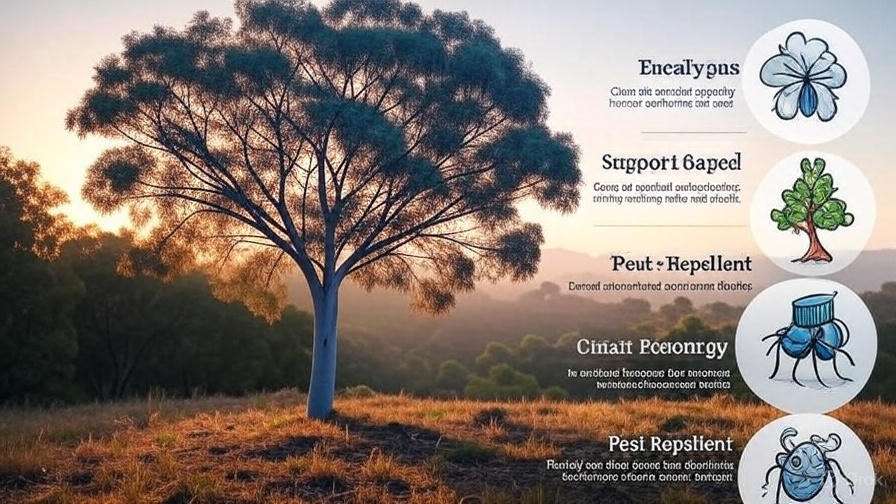
How to Care for a Blue Eucalyptus Tree
Caring for a Blue Eucalyptus tree can be a rewarding experience! Known for its stunning blue foliage and aromatic leaves, this tree adds a touch of elegance and a pleasant fragrance to any garden or landscape. Whether you’re a beginner or an experienced gardener, following the right care guidelines will help your Blue Eucalyptus thrive. Here’s how to keep it healthy and happy 
1. Choose the Right Location
Blue Eucalyptus trees love full sunlight. 
2. Watering Needs
Blue Eucalyptus trees are drought-tolerant once established, but young trees need regular watering. 
3. Soil Requirements
These trees aren’t picky about soil type, but they prefer well-drained soil. 
4. Pruning and Maintenance
Pruning is important to maintain the shape of your Blue Eucalyptus tree and remove any dead or damaged branches. 
5. Fertilizing
Blue Eucalyptus trees generally do not require heavy fertilization. 
6. Protect from Cold Weather
While Blue Eucalyptus is relatively hardy, it can be sensitive to frost. 
7. Pests and Diseases
Blue Eucalyptus trees are quite resilient, but they can occasionally fall prey to pests like aphids or scale insects. 
8. Repotting (for Potted Trees)
If you’re growing your Blue Eucalyptus in a pot, repotting every 1-2 years is essential to provide fresh soil and room for growth. 
By following these simple care tips, your Blue Eucalyptus tree will not only survive but thrive, providing beauty, fragrance, and a calming presence in your garden. 
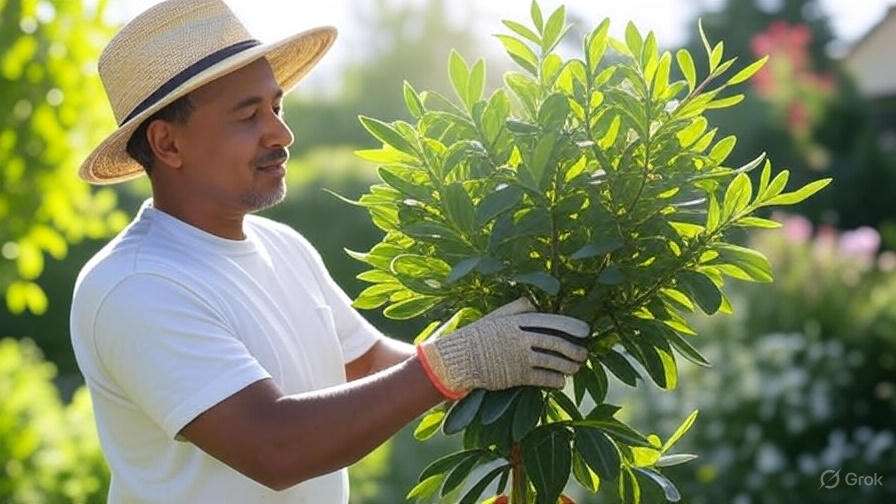
Growing and Propagating Blue Eucalyptus Trees 
Blue Eucalyptus trees (Eucalyptus polyanthemos) are beautiful, hardy, and low-maintenance, making them an excellent choice for many gardeners. Whether you’re planting one in your backyard or trying to propagate it, there are a few key things you need to know. Here’s your complete guide to growing and propagating Blue Eucalyptus trees, with simple steps and tips to help you succeed.
1. Choosing the Right Location for Your Blue Eucalyptus Tree 
Blue Eucalyptus trees thrive in full sun and well-drained soil. They’re drought-tolerant once established but prefer a bit of water during dry periods, especially when they’re young.
- Sunlight: Choose a spot that receives at least 6 hours of direct sunlight each day. Eucalyptus trees love the sun and will grow best when they’re exposed to plenty of it.
- Soil: Well-draining soil is essential. You can amend your garden soil with sand or organic matter if it’s too heavy or clayey.
2. Planting Your Blue Eucalyptus Tree 
Planting is simple, but timing is key! It’s best to plant Blue Eucalyptus in the spring or early summer when the weather is warm but not too hot. Here’s how to plant:
- Dig a Hole: Dig a hole about twice as wide as the root ball of your tree. This will allow the roots to spread out and grow easily.
- Position the Tree: Place the tree in the hole so that the top of the root ball is level with the surrounding soil. Avoid planting it too deep.
- Water Well: After planting, water the tree thoroughly to help settle the soil around the roots.
3. Caring for Your Blue Eucalyptus Tree 
Once planted, Blue Eucalyptus trees are fairly low-maintenance, but they still need a little care:
- Watering: Keep the soil moist during the first few months while the tree is establishing. Once the tree is established, you can water it less frequently, but during dry spells, a deep watering will help.
- Fertilizing: Use a balanced fertilizer in early spring to encourage healthy growth. Avoid over-fertilizing, as this can lead to weak growth.
- Pruning: Eucalyptus trees can grow quickly, so regular pruning is recommended to maintain shape and remove dead or damaged branches. Always prune in late winter or early spring before new growth begins.
4. Propagating Blue Eucalyptus Trees 
Propagating Blue Eucalyptus from cuttings is a straightforward process that can help you grow more trees for your garden or share with friends. Here’s how:
- Cutting Selection: Choose a healthy, mature branch. Use a sharp, clean knife or pruning shears to take a 4-6 inch cutting. Ensure the cutting includes a few leaves.
- Preparing the Cutting: Remove the lower leaves from the cutting and dip the cut end in rooting hormone. This helps encourage root development.
- Planting the Cutting: Place the cutting in a small pot filled with well-draining soil or a seed-starting mix. Water it gently and cover it with a plastic bag or dome to maintain humidity.
- Rooting: Place the pot in a warm, sunny spot but out of direct sunlight. Check the cutting regularly, and within a few weeks, it should develop roots. Once roots have formed, you can plant the new tree in your garden.
5. Troubleshooting Common Issues 
- Yellowing Leaves: If the leaves start turning yellow, this could be a sign of overwatering or poor drainage. Make sure the soil is well-drained and cut back on watering.
- Pests: Eucalyptus trees can occasionally attract pests like aphids or scale insects. If you notice small insects on your tree, treat them with insecticidal soap or neem oil.
- Slow Growth: If your tree is growing slowly, it might need more sunlight or water. Check the soil moisture and ensure it’s in a spot that gets plenty of sun.
6. Maintaining Your Eucalyptus Tree 
Even though Blue Eucalyptus is a low-maintenance tree, occasional care ensures it stays healthy and beautiful:
- Mulching: Applying a layer of mulch around the base helps retain moisture and suppress weeds.
- Monitoring Health: Keep an eye out for signs of pests or disease. Address any issues early to prevent long-term damage.
- Supporting Growth: If your tree grows tall and needs support, consider staking it temporarily to ensure it grows upright and strong.
By following these simple steps, you can enjoy the beauty of your Blue Eucalyptus tree for years to come. Whether you’re planting one tree or propagating multiple, with a bit of care, you’ll have a stunning addition to your garden!
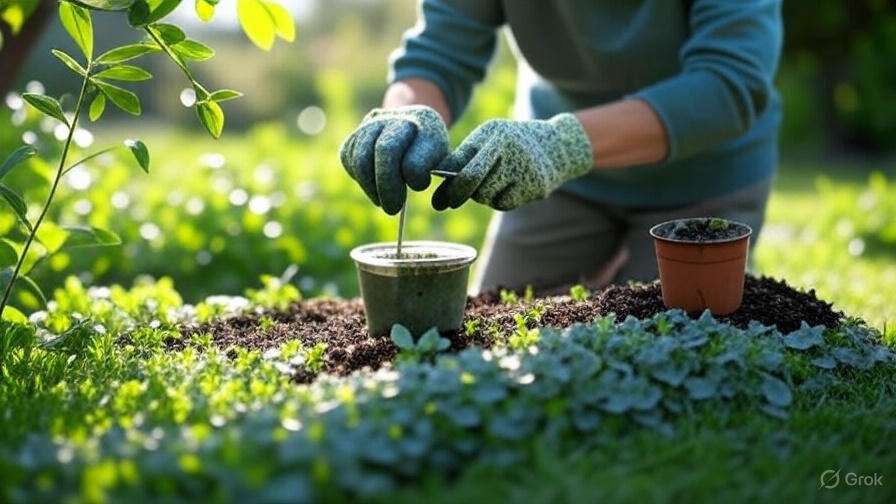
Common Problems and Troubleshooting 
Caring for a Blue Eucalyptus Tree can be incredibly rewarding, but like any plant, it comes with its challenges. Whether you’re a beginner or a seasoned gardener, it’s essential to know how to troubleshoot common issues. Here’s a guide to help you identify and resolve any problems you might encounter while growing your Blue Eucalyptus Tree.
1. Yellowing Leaves 
Problem: One of the most common signs of stress in Blue Eucalyptus is yellowing leaves. This can happen for several reasons, but the most likely culprits are poor watering practices or nutrient imbalances.
Solution:
- Overwatering or underwatering: Ensure the soil is well-drained and water only when the top inch of soil feels dry. Eucalyptus trees prefer slightly dry conditions, so avoid soggy roots.
- Nutrient deficiency: Blue Eucalyptus may suffer from a lack of essential nutrients, especially nitrogen. Use a balanced fertilizer designed for trees, and apply it during the growing season (spring and summer).
2. Leaf Drop 
Problem: Dropping leaves can be alarming, but it’s a common issue, especially during seasonal changes.
Solution:
- Natural shedding: Eucalyptus trees shed their leaves regularly, so if it’s happening in small amounts, it’s probably normal.
- Stress factors: If the leaf drop is excessive, check for stressors such as sudden temperature changes, pests, or diseases. Ensure your tree isn’t exposed to extreme temperatures or strong winds.
3. Pests and Diseases 
Problem: Eucalyptus trees can attract pests like aphids, scale insects, or spider mites. These pests can cause leaves to yellow, curl, or drop prematurely.
Solution:
- Aphids: Treat them with insecticidal soap or a strong water spray. Natural predators like ladybugs can also help control aphid populations.
- Spider Mites: If you notice fine webs on the tree, spider mites may be the problem. Regularly mist the leaves or use neem oil to keep them at bay.
- Fungal infections: Root rot and other fungal diseases can occur if the tree is overwatered. Ensure proper drainage, and avoid watering directly onto the leaves.
4. Brown or Blackened Tips 
Problem: If the tips of your Blue Eucalyptus’s leaves are turning brown or black, it could be a sign of over-fertilizing or too much exposure to the sun.
Solution:
- Too much fertilizer: Reduce fertilization to prevent nutrient burn. Blue Eucalyptus does well with minimal feeding.
- Excessive sun exposure: While the Blue Eucalyptus loves sunlight, too much direct sunlight, especially in hotter climates, can scorch the leaves. Consider moving your tree to a location with some afternoon shade during peak sun hours.
5. Poor Growth or Stunted Development 
Problem: If your Blue Eucalyptus tree is growing slowly or not thriving as expected, the issue might lie in the soil or the planting conditions.
Solution:
- Soil drainage: Blue Eucalyptus trees prefer well-draining, slightly acidic to neutral soil. Ensure your tree is planted in a location with good drainage to prevent root rot.
- Too much shade: While they can tolerate partial shade, Eucalyptus trees do best with full sunlight. Ensure the tree receives at least 6 hours of direct sunlight a day for optimal growth.
6. Wilting or Drooping 
Problem: Wilting or drooping leaves are a sign that the tree is stressed, often due to improper watering.
Solution:
- Underwatering: If the tree’s soil feels dry and the leaves are wilting, it might be time for a good drink. Water thoroughly, ensuring the soil is moist but not soaked.
- Root problems: If the tree continues to droop despite adequate watering, check for root rot, which can occur in poorly-drained soil.
7. Poor Flowering 
Problem: If your Blue Eucalyptus isn’t flowering, it may be due to poor soil conditions, lack of sunlight, or over-fertilization.
Solution:
- Proper sunlight: Ensure the tree receives full sunlight for at least 6 hours daily.
- Right nutrients: Fertilize with a low-phosphorus fertilizer, as too much phosphorus can hinder flowering.
Proactive Care Tips 
- Regularly inspect your tree for pests and diseases.
- Prune dead or damaged branches to improve airflow and reduce the risk of disease.
- Mulch around the base of the tree to retain moisture and keep roots cool, especially during hot summers.
By identifying these common problems early and applying the right solutions, you’ll ensure your Blue Eucalyptus tree stays healthy, vibrant, and beautiful!
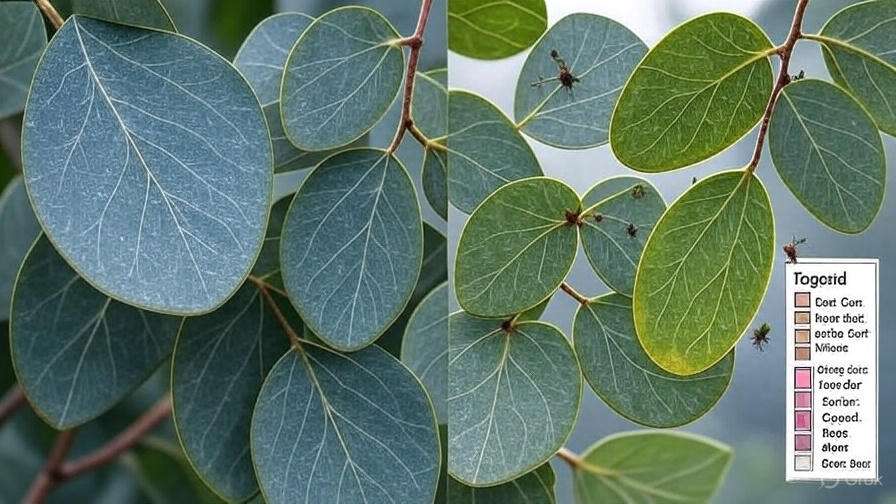
Tips for Landscaping with a Blue Eucalyptus Tree 
Landscaping with a Blue Eucalyptus tree is a wonderful way to add beauty, color, and a touch of the Australian Outback to your garden. Known for its striking blue-gray foliage and fast growth, the Blue Eucalyptus (Eucalyptus globulus) is not only visually stunning but also low-maintenance. Whether you’re creating a focal point or enhancing your outdoor space, here are some practical tips to help you design a landscape that complements this unique tree.
1. Choose the Right Location 
Blue Eucalyptus trees thrive in full sunlight. When planting, make sure to select a sunny spot with plenty of exposure to light. These trees can reach impressive heights, so choose a location where they have room to grow vertically and spread their canopy. Avoid planting them too close to buildings or other trees, as they need ample space to expand their roots and branches.
2. Consider the Soil 
Blue Eucalyptus trees prefer well-drained, slightly acidic to neutral soil. Before planting, improve your soil by adding organic matter or compost. This will enhance drainage and nutrient content, ensuring your tree has the best possible start. If your soil is clay-heavy or compacted, consider planting in a raised bed or mound to help with drainage.
3. Design with Layers 
Pair your Blue Eucalyptus tree with lower-growing plants to create depth and interest in your landscape. Consider using ground covers like lavender, native grasses, or other drought-tolerant shrubs that won’t compete with the tree for sunlight. Their soft foliage will contrast beautifully with the eucalyptus’s bold, blue leaves, making a visually appealing and balanced garden design.
4. Use the Tree as a Focal Point 
The Blue Eucalyptus is a statement tree, so consider using it as the focal point of your garden. Plant it near pathways, patios, or entrances to draw attention. Its tall, elegant form will naturally command attention and can serve as the perfect backdrop for other plantings. Surround the base with low-growing plants or mulch to enhance its beauty and prevent weed growth.
5. Plan for Maintenance 
Although the Blue Eucalyptus is a relatively low-maintenance tree, regular care will keep it looking its best. Prune the tree in early spring to remove dead or damaged branches and encourage healthy growth. Keep an eye out for any pest issues, especially eucalyptus beetles, and treat them promptly. Water your tree deeply during dry spells, especially in its first few years of growth, but avoid overwatering once it’s established.
6. Consider Wildlife 

The Blue Eucalyptus tree is a great choice if you want to attract wildlife. Its fragrant flowers are a magnet for bees, butterflies, and other pollinators. The tree’s dense canopy provides shelter for birds and small animals. Incorporate other plants that support wildlife, such as flowering shrubs or nectar-rich plants, to create a haven for local creatures.
7. Avoid Overcrowding 
While it might be tempting to fill every space in your landscape, be mindful of overcrowding. Blue Eucalyptus trees grow large and wide, and planting them too close to other trees or structures can result in competition for sunlight and nutrients. Be sure to give your tree room to stretch out its branches without obstruction for maximum growth and aesthetic appeal.
8. Incorporate Hardscaping Elements 
To enhance your landscaping, combine your Blue Eucalyptus tree with hardscaping features like stone paths, benches, or decorative boulders. The contrast between the tree’s organic form and the structured hardscape will add texture and visual interest to your garden, creating a sophisticated and well-rounded design.
By following these landscaping tips, you can create a stunning, functional outdoor space with the Blue Eucalyptus tree as the centerpiece. Its unique color and form will bring beauty and elegance to your garden for years to come, all while attracting wildlife and providing a low-maintenance option for your landscaping needs.
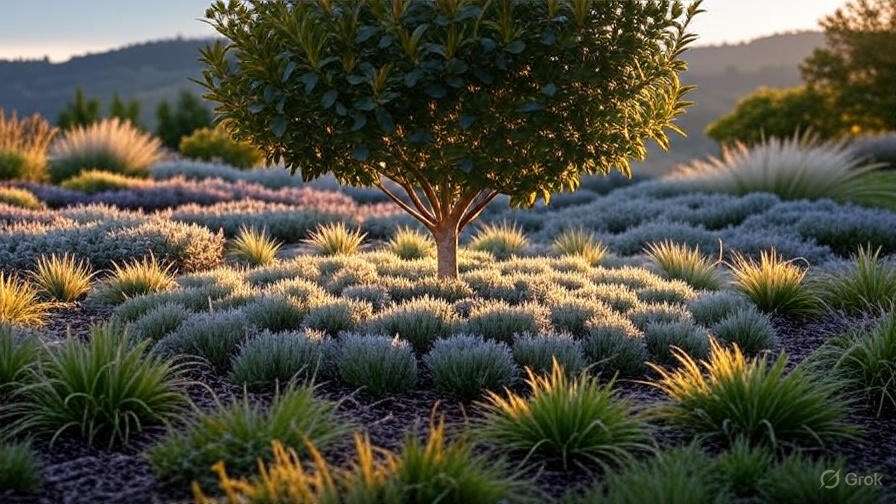
Blue Eucalyptus Tree Alternatives 
If you’re looking for a tree that offers similar beauty and benefits to the Blue Eucalyptus but with different features or growing requirements, you’re in the right place! While Blue Eucalyptus trees are a stunning choice for many gardeners, they may not always be ideal for every environment or gardening style. Here are some fantastic alternatives to consider:
1. Silver Dollar Eucalyptus (Eucalyptus cinerea) 
The Silver Dollar Eucalyptus is a close relative of the Blue Eucalyptus. It shares a similar silvery-blue foliage but tends to be smaller and more compact, making it a great option for smaller gardens or containers. This tree can tolerate a range of soil types and is quite drought-tolerant once established, just like its cousin. Plus, it has a lovely aroma and can be used for making wreaths or in dried arrangements!
2. Lemon Scented Gum (Corymbia citriodora) 
If you love the fresh, crisp scent of eucalyptus but want something a little different, the Lemon Scented Gum is an excellent alternative. Known for its strong lemon fragrance, it adds an aromatic touch to your garden. This tree is perfect for larger spaces as it can grow quite tall, offering a lush, fast-growing addition to your landscape.
3. Tallowwood (Eucalyptus microcorys) 
For a more traditional eucalyptus alternative, consider the Tallowwood. This native Australian tree is known for its durability and strength. It’s perfect for those looking for a tree that will thrive in wetter conditions and still provide striking, glossy foliage. Plus, Tallowwood trees can grow to impressive heights, making them a great choice for shade or privacy.
4. Tasmanian Blue Gum (Eucalyptus globulus) 
While still in the eucalyptus family, the Tasmanian Blue Gum is a bit more adaptable than the Blue Eucalyptus. It’s known for its beautiful, smooth bark and large, glossy leaves. This tree grows quickly and is well-suited to coastal areas, making it a popular choice for gardeners living near the sea. Its ability to thrive in diverse environments makes it a practical option for a wide range of climates.
5. Kangaroo Paw (Anigozanthos) 
If you’re looking for something that adds color and texture to your garden, the Kangaroo Paw is a unique option. While not a tree, this plant features vibrant flowers in shades of red, yellow, and orange that are sure to draw attention. It’s also drought-tolerant and thrives in well-drained soil. This is a great choice for gardeners who want a striking, low-maintenance plant that complements other Australian natives like the eucalyptus.
6. Bottlebrush (Callistemon) 
Another excellent alternative is the Bottlebrush plant. Known for its unique, brush-like flowers, the Bottlebrush can add a pop of color to your garden. It thrives in a variety of soil conditions and is quite adaptable to different climates. Plus, it attracts bees and birds, which makes it a wonderful addition to any garden that supports wildlife.
Final Thoughts 
Each of these alternatives offers something special while maintaining the beauty and appeal of eucalyptus trees. Whether you’re after a tree with similar foliage, a fragrant addition, or a smaller, more manageable plant, there’s a perfect option for every gardener. When choosing your alternative, make sure to consider your local climate, soil type, and the amount of space available for growth. Happy gardening!
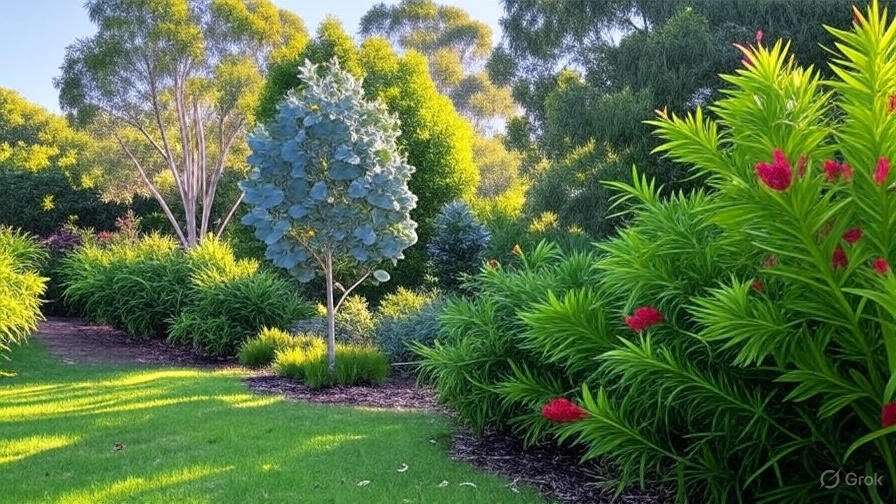
Conclusion 
The Blue Eucalyptus Tree is undeniably a beautiful and versatile addition to any garden, but it’s not the only option available. Whether you’re looking for a tree with similar foliage, a fragrant alternative, or something that fits better in your climate, there are plenty of wonderful alternatives to choose from. Trees like the Silver Dollar Eucalyptus, Lemon Scented Gum, and Tallowwood offer similar beauty with different growth habits, while plants like the Kangaroo Paw and Bottlebrush provide colorful accents without the tree size.
When selecting the right plant for your garden, always consider factors like space, soil type, climate, and maintenance needs. With the right choice, you’ll be able to create a stunning garden that reflects your personal style and thrives year-round.
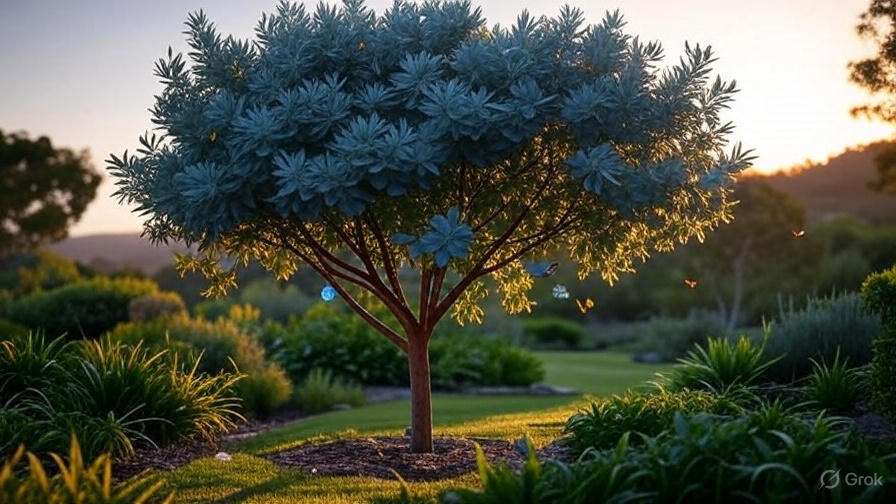
No matter which alternative you pick, remember: the beauty of nature is all about variety and finding what works best for you. Happy planting!
Frequently Asked Questions(FAQ)
Can I grow a blue eucalyptus tree indoors?
While it’s possible to grow a blue eucalyptus tree indoors, it requires a lot of space, bright light, and high humidity. These trees thrive in outdoor environments with plenty of sun and well-draining soil, so growing them indoors can be challenging unless you can provide the right conditions.
How fast does a blue eucalyptus tree grow?
The blue eucalyptus tree is known for its fast growth rate. It can grow up to 10-15 feet in the first few years, depending on environmental conditions. With proper care, it can quickly become a striking addition to your garden.
What kind of soil does a blue eucalyptus tree need?
Blue eucalyptus trees prefer well-draining soil that is slightly acidic to neutral. They do best in soil that allows water to drain easily, preventing root rot. Adding organic matter can improve soil structure and drainage for optimal growth.
Why are the leaves of my blue eucalyptus tree turning yellow?
Yellowing leaves can indicate several issues, such as overwatering, nutrient deficiencies, or poor soil drainage. Make sure your tree is not sitting in waterlogged soil, and consider adding a balanced fertilizer to address any nutrient imbalances.
How often should I water my blue eucalyptus tree?
Blue eucalyptus trees prefer deep watering rather than frequent light watering. Water the tree thoroughly when the top 2-3 inches of soil are dry. During the first year, keep the soil moist but not soggy; once established, they are drought-tolerant and need less frequent watering.
Is the blue eucalyptus tree drought-tolerant?
Yes, blue eucalyptus trees are drought-tolerant once established. While young trees require regular watering to establish roots, mature trees can withstand dry periods, making them an excellent choice for regions with occasional droughts.
How do I prune a blue eucalyptus tree?
Prune your blue eucalyptus tree in late winter or early spring to remove dead or diseased branches and maintain a healthy shape. Use clean, sharp pruning shears to cut back any unwanted growth, but avoid heavy pruning as it can stress the tree.
What pests commonly affect the blue eucalyptus tree?
Common pests that affect blue eucalyptus trees include aphids, mealybugs, and scale insects. Regularly check your tree for signs of pests, such as sticky residue or discoloration. Use natural insecticides or manually remove pests to keep your tree healthy.

